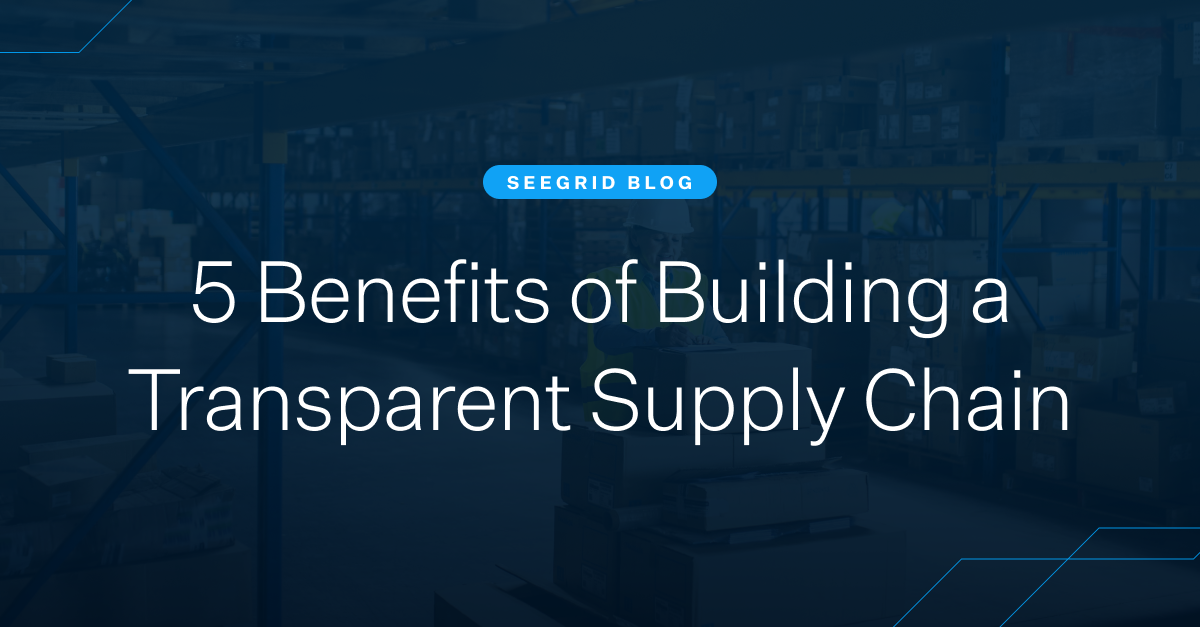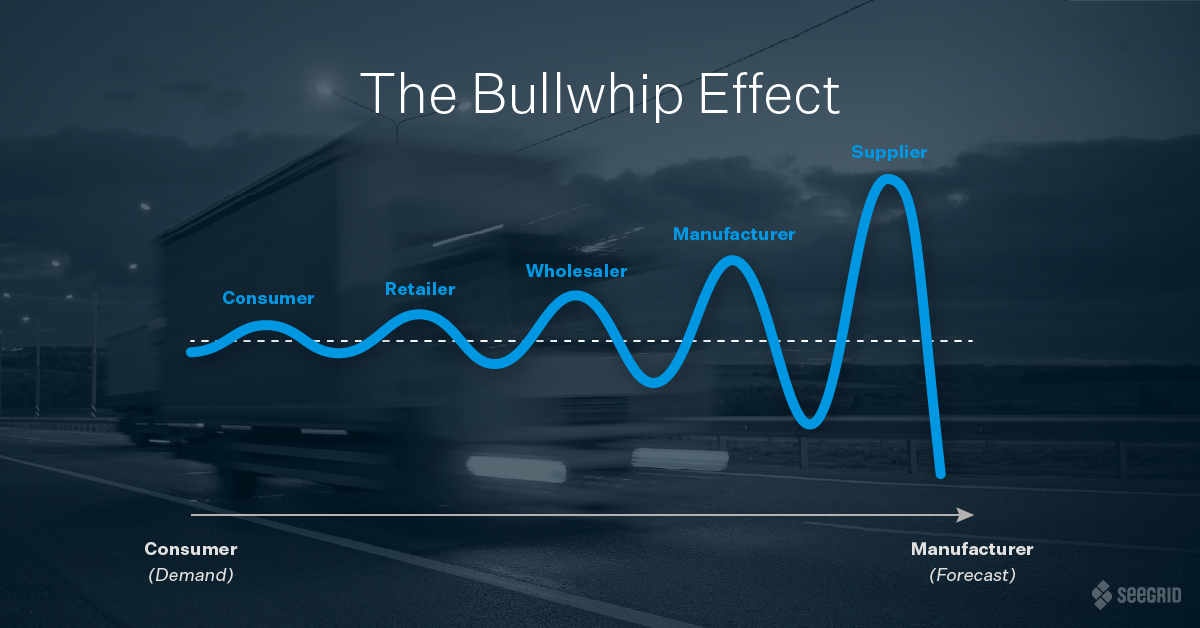The pandemic, a labor shortage, skyrocketing demand, component part shortages, cargo ship traffic jams: The world’s supply chain is complex. Consumer goods leaders are trying their best to sidestep these hurdles, continue to meet customer demands, and adapt to evolving consumer behaviors.
For the consumer goods industry, investing in building a transparent supply chain will not only help companies thrive in the current climate, but also help them be better prepared for future disruptions and growth. The only constant is change, so resilience and agility are key to keeping up. Check out these five benefits of supply chain visibility and transparency.
1. Supply Chain Visibility Boosts Consumer Trust
Supply chain and data visibility can help you gather insights and generate reports to inform improvements that can be made to deliver faster, better, and for less which ultimately builds consumer trust. According to PwC’s recent consumer goods report, 41% of online shoppers rate fast and reliable delivery as one of their top three most important attributes of shopping online. Additionally, 35% of respondents indicated that in-stock availability of items was most important when shopping online.
Autonomous mobile robots (AMRs) improve throughput productivity and reliability, making sure that manufacturing and distribution facilities get orders fulfilled and shipped quickly, accurately, and effectively. When facility workflows are operating optimally, they can deliver on time, no matter the occasion. Keep in mind that with so many options for purchases being just a click away, bad experiences can lead to losing customers. Facilities can monitor AMR fleet performance data to ensure that these types of situations don’t happen and that consumer trust is maintained.
2. Transparency and Flexibility Strengthen Agility
Transparency of supply chain operations is integral to making swift decisions that minimize disruptions. Consumer goods is an industry defined by minutes. For example, the bullwhip effect initiated by the pandemic-caused panic buying, wreaked havoc on current operations but also had longer-term supply and demand implications.
When a step is added, subtracted, delayed, changed, or accelerated anywhere in the manufacturing or order fulfillment process, operations need to shift quickly to accommodate and keep activities on track. A company that adapts to change quickly lowers its risk of falling behind and opens doors to new opportunities.
A flexible automation solution should be the cornerstone of every consumer goods supply chain. Ensure that an automation solution enables you to easily adjust to changes and future growth. For example, solutions like Seegrid Palion AMRs are quick and easy to train and retrain. All it takes is for someone to drive the AMR on its new route, and the AMR is ready for its new task. With facility employees empowered to make changes to AMR routes and tasks, you can keep production running without sacrificing additional costs and downtime when changes occur.
3. Transparency Gives You a Competitive Advantage
Whether the supply chain is in upheaval or it’s business as usual, consumer goods companies are always striving to be ahead of their competition. Transparency provides a competitive boost because it allows leadership to constantly make incremental improvements and make each week, day, or even shift, more productive than the last.
AMR fleet analytics software, like Fleet Geek which is part of Seegrid’s Fleet Central software suite, provides supply chain visibility through data visualizations and status reports. Fleet analytics software solutions provide digestible, timely, and relevant data about the robots and activity that allows leaders to make informed productivity decisions. Rely on data to identify trends in activity and pinpoint bottlenecks in your workflows. Fleet analytics software provides a holistic view of your operations to help you make informed decisions based on objective data to drive continuous improvement. As changes are implemented based on the data, users can measure progress to ensure metrics are tracking in the right direction.
4. Building a Transparent Supply Chain Reduces Costs
Another evolving aspect of customer behavior is the increased demand for personalization. Customizing products and orders requires incredible attention and additional steps in workflows when fulfilled by human workers, especially with high order volumes and consumer demands, which can lead to excessive overtime. The labor shortage requires consumer goods leaders to make the most of their current workforce by assigning them to value-add jobs. Automating processes can drive down labor costs while providing safer, more rewarding opportunities for human workers.
Facilities can also maximize throughput productivity while reducing costs by implementing AMRs—it doesn’t have to be a tradeoff. A key factor to improving productivity and fulfilling demand on time is through predictable processes. Solutions like AMRs work consistently and reliably to ensure work is completed accurately. Workflows will ultimately become more efficient which will boost your bottom line. Reliable solutions will help you reduce downtime and additional costs by removing the risk of human error, improving safety, reducing product and equipment damage, and reallocating operational costs for a safer and more productive facility.
5. Transparent Supply Chain Improves Safety and Quality Control
Some of the most important aspects of supply chain transparency are safety and quality control. For supply chain management, companies are able to create safe workspaces by automating workflows and reducing touchpoints. AMRs contribute to a safer environment by automating payload exchanges and allowing workers to pursue less dangerous job opportunities. You can leave the hazardous jobs to the AMRs while boosting employee retention and safety.
Manually driven powered industrial trucks are prone to accidents and injuries, as they rely on human input which can be compromised in many ways. AMRs are designed with built-in safety systems to seamlessly work alongside human workers while boosting facility safety. AMRs reliably follow orders and complete their tasks perfectly on time, every time. You can expect fewer goods damaged in transit, and since AMRs can work 24/7, you’ll likely experience greater productivity levels.
The Rewards of Transparency
Taking the time now to invest in supply chain visibility and transparency will improve your current operations and make your business better able to adapt to whatever disruptions and opportunities come your way as you continue to grow.
Infographic: AMRs Increase Supply Chain Flexibility & Predictability
Download this infographic to learn how AMRs boost productivity, improve safety, and deliver a strong ROI.







